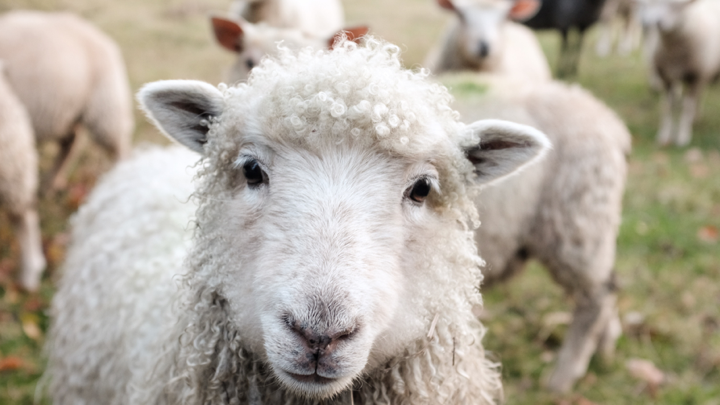Species and Breeds
In sheep farming, genetic variation and sheep breed play an important role for the efficiency of the production system. Certain sheep breeds can adapt and perform better in different management, climate, and agro-ecological conditions. One of the primary objectives of sustainable animal production in mixed farming is successful matching of suitable breeds with prevailing environmental, feeding and market conditions. Optimizing the available feed resources with an appropriate class or breed of livestock that can utilize the feed efficiently within production systems is crucial for successful sheep farming (Ørskov1999). Depending on the production systems, certain sheep breeds can fit pasture or grain-based production systems better. For example, larger sheep breeds such as Suffolk can perform well on grain-based feeding systems, while Texel and Dorper sheep can utilize a forage-based diet more efficiently. These sheep breeds utilize the low-quality fodders efficiently compared to improved breeds and they may have a specific production niche under forage-based systems (Wildeus et al. 2005). In addition, indigenous sheep breeds such as Katahdin or Barbados Blackbelly evolved under low-input management conditions and are highly adaptable pasture-based feeding systems in warmer climates (Wildeus et al. 2005).
Oregon Value
There are 84,338 sheep farms across the US. Large sheep operations, which own 80 percent of the sheep, are located primarily in the Western United States. Small producers (<100 sheep), comprise the majority of sheep operations, but own only 17 percent of the sheep. Sheep comprise less than 1% of total U.S. livestock receipts. Growth of the industry will rely on these smaller operations growing and continuing to introduce more people to the industry while at the same time tapping into local niche markets for lamb and mutton, wool, and dairy products. There are approximately 5.2 million sheep in the US. Texas and California comprise 25% of the total US sheep population. With 165,000 sheep, Oregon is in the top 10 States in term of its sheep population. The soil and climate conditions of Western Oregon are well-suited to sheep production, despite high land value and predator threats.
Production Systems Descriptions
Although sheep production has always been in the culture of agricultural farming in the United States, there have been many cycles over the last 100 years. The low consumer preference for mutton and availability of synthetic fibers have had a significant impact on sheep farming, with a decrease in the number of sheep from 48 million at the beginning of the 20th century to 5.2 million in 2018. Sheep are predominantly raised for meat and wool production and occasionally for milking in the United States. Depending on the farming practices and harvesting management, there are number of different sheep production systems in the US.
-
Farm systems: extensive/intensive
-
Lambing systems: timing/barn/pasture
-
Finishing systems: pasture/feedlot
-
Harvesting systems: USDA inspected or custom exempt, halal, kosher
In the US, 80% of the lambs are born during the first five months of a year while 20% of lambs are born in the second half of the year, mostly in fall (ASIA, 2018). Predominantly, lambing occurs in mid-winter-early spring period in the Pacific Northwest. Weaning age of lamb varies between 30 and 90 days, depending on the management system and the amount of milk produced by the ewe. Lambs are weaned at 60 days of age in intensive operations in the eastern US (Barkley, 2014) while in New Zealand weaning age is typically 12 weeks of age (Hughes, 1983). In the US, Lambs are slaughtered between 8 and 14 months or when they weigh 120 - 160 lb (54.5-72.5 kg) (ASIA, 2018). The higher carcass weight at slaughter in the US is partly due to consumer preference and slaughter costs. In the US, slaughterhouses apply charges for individual lambs not by weight. Therefore, the cost per pound of lamb is higher for smaller lambs than large lambs (Kintzel webhttps://whitecloversheepfarm.com/prl-articles/FarmingMagazineBreedSelect...).
Furthermore, sheep have a significant value in integrated-crop livestock farming. In some crop-livestock farming systems in Oregon livestock are often used as a tool to manage weeds and increase sustainability through additional income. The Willamette Valley’s grass seed crop is an excellent example. Sheep are turned out onto the grass seed fields early in the season. The sheep benefit from a high-quality forage at a time when forages are generally scarce. The grass seed crop benefits because careful grazing stimulates increased tillering, which ultimately results in increased seed production.
Foraging Behavior
Pasture feeding value is a function of chemical structure of forages and animal intake. Pasture quality is generally affected by plant maturity, species, temperature, and rainfall. Because of this, there is a seasonal variation in growth rate, forage quantity, and forage quality (Stevenson et al 2003). All these plant-related factors can affect the animal's grazing behavior. Several studies have reported higher forage intake when livestock are provided legumes compared to grasses (Parsons et al. 1994; Waghorn & Clark 2004; Dewhurst 2013). When offered free choice, sheep prefer a diet of 70% legumes and 30% grasses. Foraging behavior of livestock in particular, selection, preference, and ingestion behaviors vary substantially. Overall sheep are more selective than cattle. Sheep also exhibit stronger social bonds than cattle which affects grazing distribution. Compared to cattle, sheep can graze pasture more closely due to their narrower muzzles.
See Video "Who's Coming to Dinner"
Web Resources
Colorado State University
Ohio State University
Oregon State University
Penn State University
Texas A&M University
Organizations
PowerPoint Slide Sets
Videos
Oregon Teaching Programs
Oregon Extension Programs
Oregon Research Programs
Image Gallery
----------------------------------------------

